Dear friends,
During our All Souls Sunday Eucharist, which we will celebrate this weekend, our second reading will come from The First Letter of Peter: 1 Peter 1:3-9. In this reading, we find an often used saying in the Church: “a living hope.” The phrase “a living hope” is a curious one. It holds together two perhaps contradictory ideas. On the one hand, we have the word “living.” Living means to be alive right now, to be present in this world, engaged in the here and now. “Hope” inspires a different thought. Hope is a word more concerned with that which is not here yet, things yet to come; perhaps something we yearn for or desire, but which is not immediately within our grasp. So, what does it mean, then, to experience a “living hope?”
The writer, who we believe is Peter the Apostle, is speaking about what it means to live somehow simultaneously both in the present and in the future. This is a central aspect of the Christian faith: to live now in light of not only the past we have come from, but the future, the Kingdom of Heaven, which we anticipate and which we might even experience in this moment. Why speak of this? And how, exactly, does this work? Peter writes these words so that one might contemplate what it means to live in faith, especially in moments when even the present, let alone the future, is not entirely certain. And the way we might accomplish this is to do those things which God in Christ calls us as Christians to practice: to love one another.
In the Christian faith, when people love one another, remember one another, engage with one another, we live in a way which unites those three dimensions of past, present, and future. A way of life which honors others, which acknowledges all three dimensions; and where one seeks to inspire confidence by focusing on what makes someone or something so important, thus helping you understand why you love them so much, and where this love is ultimately going. In the original Greek language of the New Testament, the word for “hope” is ἐλπίς (elpis), which means expectation, hope; and, in particular, a hope, trust, or confidence which is focused intently on the author or the source of one’s hope. In other words, by focusing on, meditating on, and contemplating who is important to us, we are reminded of what it means to truly live in the light of the resurrection: the eternity beyond death itself. For All Souls Day, “a living hope” is very much at the center of our prayers and our living of them, as we honor those who we love, and indeed how their lived example brings us closer to God, the source of all hope itself. But this reading, I find, is also helpful elsewhere right now.
This past week has been a challenging one, to say the least. Not only do we find ourselves in a season in the Church where both death and our perceived life beyond it are front and center, but where we share other facets of life which inspire different anxieties and concerns. To put it bluntly perhaps, the election of the next President of the United States of America has brought this about. This week’s events have occupied every newspaper, every online publication, every air wave, and every news bulletin, as much as every prayer list. And the prayers, the concerns, and the anxiety continue. Indeed, no matter which side one finds themselves on, and even if one finds does not align themselves with any particular ideology or group, there is very much a common, shared experience. That is, to feel caught in the midst of something which does not seem to be fully reconciled, in fact far from it. Two things manifest themselves, then: an anxiety at the lack of harmonious resolution, and a desire for it. Two things which, interestingly and importantly, we all share, even if we do not see eye to eye on where this anxiety resides and how the resolution might be sought.
One thing that is worth remembering amid such a time, is precisely that wherever we locate ourselves, we all actually share those twin experiences of anxiety and desire for reconciliation. In an odd way, at a time where we often find ourselves divided, this two-fold experience unites us. We are united, perhaps, in our shared anxiety and need to resolve it. That’s not a good thing in itself, but it is something; something that maybe, just maybe, might become a starting point for conversation, collaboration, or even, risky as it may feel, to engage what it means to embody a living hope. In other words, we remember the past, we hold the present, and we look to the future; and we ask one another what this means and what this might look like. And yes, again, that is a risk, depending on who you talk to. It’s not easy. Furthermore, it hurts. And it hurts even when we begin to contemplate how to engage again with those who we fear, or who we fear may hurt us. But if the Christian faith teaches one thing that we can all begin with, no matter what, it is that desire for and the opportunity to engage in a living hope. How we navigate that exactly is the task, but the fact that it is a possible task means there is a possible way. And I am confident that our own parish community, like any and every other community, can do it. And when we struggle, may we listen to those words of scripture, and allow the one who accomplishes them accomplish that same reconciliatory spirit in us. That is something worth living in hope.
The Rev. Edward Thornley
Rector






